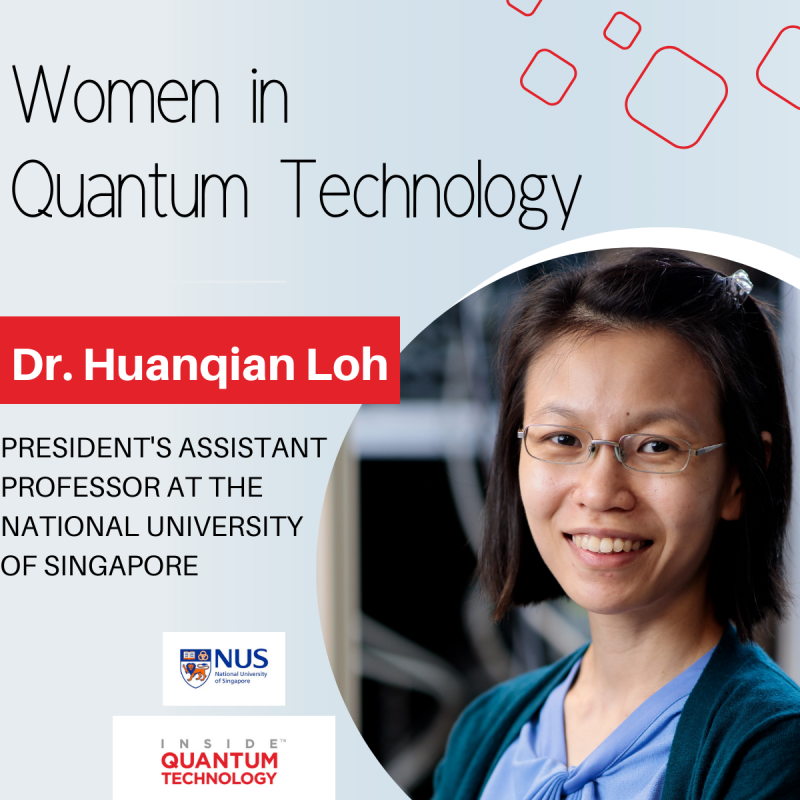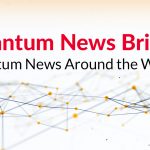Women of Quantum Technology: Dr. Huanqian Loh of the National University of Singapore (NUS)

As a quantum researcher at the forefront of emerging new technology, Assistant Professor Dr. Huanqian Loh of the National University of Singapore (NUS) is passionate about where quantum science is headed. With an extensive background in quantum research, Loh has come to appreciate the evolution of this field. By the time she started her laboratory in Singapore in 2017, Loh had accumulated thirteen years of experience with trapped ions, molecules, and quantum optics. Instead of continuing in these familiar directions, she leaped into an exciting new technology, reconfigurable tweezer arrays.
“One of the bonuses of training in an experimental quantum physics laboratory is gaining a set of highly transferrable skills,” Loh told Inside Quantum Technology. “These skills allow you to break new ground in quantum science.” Now at NUS, Loh has racked up impressive achievements, including the high-fidelity assembly of large defect-free arrays containing hundreds of atoms. Multiple international accolades, including the L’Oreal-UNESCO International Rising Talent and the World Economic Forum Young Scientist awards, have recognized her research.
Loh’s interest in quantum physics began during her undergraduate career at the Massachusetts Institute of Technology (MIT). “My foray into quantum technology started from an undergraduate research project in the laboratory of Vladan Vuletic,” Loh stated. “I got hooked on the idea of controlling atoms using optics and electronics setups that I built! I was also incredibly lucky to encounter several outstanding mentors who made me feel at home in the quantum physics community while encouraging me to challenge myself.” After obtaining her bachelor’s degree at MIT, Loh became a graduate student at the University of Colorado Boulder, specifically JILA, before returning to Singapore and to MIT to build up her postdoctoral experience. After finishing her postdoctoral stint, Loh transitioned to her appointment as a Principal Investigator at the Center for Quantum Technologies (CQT).
While Loh remains a PI at CQT, she is also an assistant professor at NUS. “My laboratory works on Rydberg atom arrays, which offer exquisite control of long-range interactions at the single-atom level,” Loh elaborated. “I am primarily interested in developing new tools to scale up and program these arrays and use the atom arrays for quantum computation and simulation.” As she looks ahead, Loh is also planning the next step for her research: “Next year, my team and I will be moving to Duke University to join the Duke Quantum Center.”
As a female leader in her field mentoring the next generation of quantum researchers, Loh keenly understands the need for diversity in the quantum ecosystem. “The quantum industry can benefit from having more women involved, and one of the biggest challenges for women in science comes from juggling motherhood and a scientific career,” she said. “The demanding schedules of a Ph.D. student and in the subsequent postdoc years often seem to conflict with that of being a mother, which can make many women feel like they are forced to choose between motherhood and science. More accessible childcare options would help encourage more mothers to resume their scientific careers.”
Kenna Hughes-Castleberry is a staff writer at Inside Quantum Technology and the Science Communicator at JILA (a partnership between the University of Colorado Boulder and NIST). Her writing beats include deep tech, quantum computing, and AI. Her work has been featured in Scientific American, Discover Magazine, New Scientist, Ars Technica, and more.

























